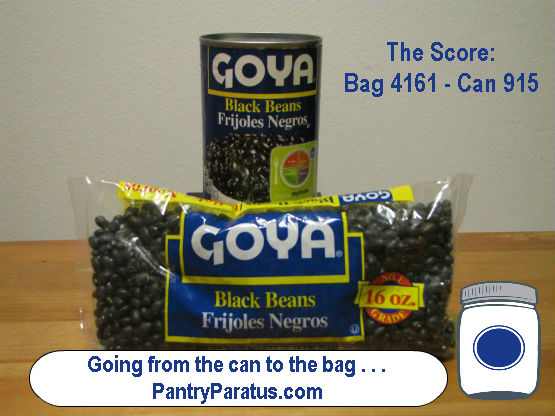
Going from the can to the bag, the beauty of bulk beans
Score is: Bag 4161 – Can 915
Okay, so you are looking to put some food away or you just want to stock up to minimize trips for staple items—either way what does it cost to put food away? The best advice (and I get this on good authority) is to buy in bulk. Alright, but how does the cost savings stack up for say, bulk beans?
Beans, you probably either love them or hate them. Me, I love them, especially with cornbread in a cast iron skillet. Beans bulk, beans canned, beans bagged—what is the real cost and how do you measure that? These are much better questions if you are looking to buy a lot of them.
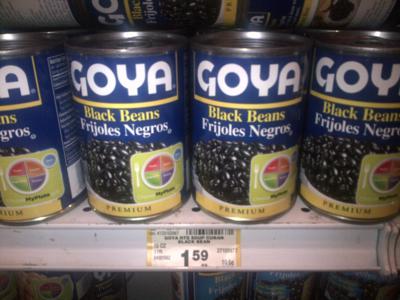
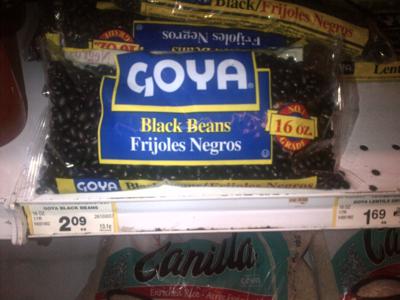
This is a side by side comparison of two containers of beans from our local grocery store. They are both Goya® brand (to isolate as many variables as possible), the first one is a 15 oz can that cost $1.59 and the other is a 16 oz bag that cost $2.09. Now doing a cost per unit of weight comparison you can see that the can already looks like a better value: Can: $0.106 per oz, Bag: $ 0.130625 per oz.
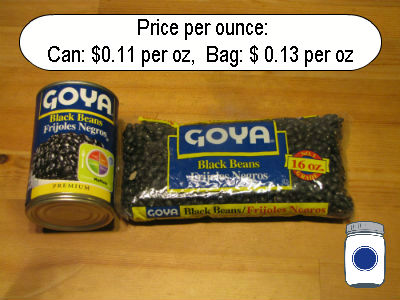
Wait a minute . . . when I shake the can I can hear it slosh, where the bag clearly rattles. Hmmmm, could I be paying for water? Actually, yes you can—it is called a “value added” product. Here is how it breaks down, Goya® knows that to take a hard bean and make it a soft palatable bean takes time and heat energy. So, they figure that you are into soft beans and not hard beans when you are in a hurry. So, the already cooked variety (in a can) comes with water weight. Since to buy beans in bulk by the barrel is not practical, smaller consumer cans are what grocery stores typically carry.
To get a true apples to apples (or beans to beans if you will) comparison you would have to count the number of beans. Unless you have a lot of time on your hands, an accurate scale and algebra are your friends here. I got the following count for the number of beans in each container: Bag 4161, Can 915.
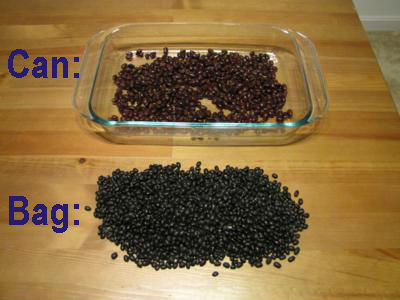
Woooah, that is quite a difference. Clearly the (16 oz by weight dry) bag is a better choice than the can—but what is the cost per bean? Cost per bean in the bag: $0.0005, cost per bean in the can: $0.0017. Okay, so this beans in bulk comparison is probably not going to break your piggy bank. Taking this further, if you buy bulk beans in say a 5 or 25 pound bag you are realizing some true savings here when you apply the math for value added vs non-value added packaging.
I hope that you found this helpful. Bulk beans are a great bargain and you can put away some good protein for not a whole lot of cost involved. Just take some extra time and prepare those bulk beans yourself before you are ready to use them and save that money for something else—like a pressure cooker.
Wilson
Pro Deo et Patria






